Introduction
Applied Behavior Analysis (ABA) therapy has emerged as a significant, evidence-based treatment for individuals with autism spectrum disorder (ASD) and attention deficit hyperactivity disorder (ADHD). Grounded in the principles of learning and behavior, ABA therapy has been shown to effectively foster new skills, mitigate challenging behaviors, and improve overall quality of life. However, not all research is created equal, and it is important to recognize the need for high-quality ABA practices that are informed by solid research and ethical considerations.
The Council of Autism Service Providers (CASP) has introduced new ABA Practice Guidelines, emphasizing the importance of correct implementation and setting the standard for care. These guidelines reflect an evolving understanding of autism and the need for individualized, culturally sensitive approaches to treatment. As we navigate the challenges of delivering ABA therapy, it is crucial to address social factors affecting autism treatment and strive for equitable access to optimal interventions.
By prioritizing robust practices and embracing a nuanced approach, ABA therapy can empower both individuals and their families to achieve meaningful, real-world outcomes.
What is Applied Behavior Analysis (ABA) Therapy?
Applied Behavior Analysis (ABA) therapy has evolved as a significant, evidence-based treatment for individuals with autism spectrum disorder (ASD) and attention deficit hyperactivity disorder (ADHD). It is grounded in the principles of learning and behavior, and recent research indicates ABA's effectiveness in fostering new skills, mitigating challenging behaviors, and improving life quality. However, it's critical to recognize that not all research is created equal. Studies show many interventions for autism, including ABA, suffer from design flaws which can obscure their true impact, including effectiveness and potential harm. This highlights the importance of high-quality ABA practices that are informed by solid research and ethical considerations.
Reaffirming the importance of robust practices, the Council of Autism Service Providers (CASP) introduced new ABA Practice Guidelines to set the standard for care. As per CASP CEO Lorri Unumb, "ABA is a highly effective treatment for autism. But it has to be correctly implemented at the highest quality." This reflects an acknowledgment that while ABA can be transformative, the quality of delivery is paramount to its success.
The new guidelines come at a time where there's a growing understanding of autism's diverse presentation. The definition of autism has broadened, recognizing that interventions like ABA should be tailored to each individual's unique needs. Dr. Jan Blacher notes the shift in autism diagnosis from 1 in 2,500 individuals to 1 in 36 today, calling for a nuanced approach to treatment across the autism spectrum.
In the broader context, ABA therapy must also navigate the social factors affecting autism treatment. Conferences and workshops, like those at Bangor University, are tackling the real-world challenges of implementing data-driven research in healthcare settings. They discuss how to address inequalities affecting access to optimal interventions, including social deprivation, racism, cultural differences, and mental health stigma.
In conclusion, while ABA therapy remains a cornerstone in behavioral interventions for ASD and ADHD, the focus is shifting towards individualized care, rigorous application of guidelines, and a culturally sensitive approach that considers the social model of disability. The recent updates and discussions in the field are not just about refining techniques but also about catalyzing change that translates into meaningful, real-world outcomes for those on the autism spectrum.
Benefits of ABA Therapy
ABA therapy, or Applied Behavior Analysis, is a widely recognized and transformative approach that supports individuals with Autism Spectrum Disorder (ASD) and Attention Deficit Hyperactivity Disorder (ADHD). Through personalized and goal-oriented strategies, ABA therapy empowers these individuals to navigate social, communicative, and behavioral challenges, fostering a more inclusive and understanding society.
The cornerstone of ABA therapy is the comprehensive assessment conducted by a Board Certified Behavior Analyst (BCBA), which lays the foundation for setting specific, measurable goals tailored to the individual's needs. This process is dynamic, with consistent monitoring and adjustments to ensure continual progress and benefit. ABA therapy's adaptability allows it to cater to diverse family schedules and needs, emphasizing that effective support encompasses both the child and their family unit.
Significantly, the social model of disability—recognizing disability as a social construct—has influenced ABA practices, prompting a shift from a focus on 'fixing' individuals to promoting societal change that accommodates diverse abilities. This approach aligns with current discussions in disability studies, which highlight the cultural and social dimensions of disability, and advocate for the recognition of disability as a minority identity, deeply intertwined with civil rights.
The evolving understanding of autism, as noted by Dr. Jan Blacher, reflects a broader spectrum of abilities within the ASD community. No longer confined to a singular profile, it acknowledges individuals with diverse cognitive abilities and skills, necessitating flexible and differentiated intervention strategies.
As awareness of ASD grows, so does the need for accessible and reliable information. Organizations like The Autism Community in Action (TACA) and platforms like AT-Newswire serve as critical resources, providing insights into autism, therapies, and the latest research to support informed decision-making.
The commitment to informed, respectful, and adaptable support through ABA therapy not only benefits individuals with ASD and ADHD but also contributes to a more equitable and understanding society, where diversity in ability is acknowledged and valued.
Improved Social Skill Development
Applied Behavior Analysis (ABA) therapy is recognized for its significant impact in enhancing the social competencies of individuals with Autism Spectrum Disorder (ASD) and Attention Deficit Hyperactivity Disorder (ADHD). ABA utilizes practical techniques like social stories, role-playing, and peer modeling, which are instrumental in teaching vital social skills. These skills include initiating and sustaining conversations, interpreting nonverbal communication, and fostering friendships.
Understanding the complexities of social interactions is critical, particularly when viewed through the lens of the social model of disability. This model considers disability as a social construct, emphasizing the need for society to adapt to the diverse needs of individuals rather than expecting individuals to conform to a predefined 'normal'. In the context of ABA therapy, this approach encourages the tailoring of interventions to support autistic individuals in a manner that respects their unique identities and experiences.
Research has highlighted that some traditional practices in disability support may not fully recognize the individual's identity and can inadvertently contribute to social injustice. This is where ABA therapy can play a transformative role by focusing on the strengths and abilities of individuals with ASD and ADHD, promoting their inclusion and advocating for systemic changes that respect and support their full participation in society.
Recent advancements in ABA therapy, alongside a growing awareness of the social dimensions of disability, have led to more respectful and individualized support plans. This evolution in practice aligns with the principles of the social model of disability, ensuring that individuals with ASD and ADHD are not only learning social skills but are also being supported in environments that are becoming more inclusive and equitable.
Enhanced Parenting and Family Support
Applied Behavior Analysis (ABA) therapy extends its benefits beyond the individual in therapy, offering a lifeline to parents and families navigating the complexities of raising children with autism and ADHD. This therapeutic approach empowers parents with practical methods to address challenging behaviors, encourages positive engagements, and fosters an environment of support within the home. A salient feature of ABA therapy is its collaborative spirit, prioritizing a partnership with parents to ensure they play a pivotal role in their child's therapeutic journey.
Through individualized assessments by Board Certified Behavior Analysts (BCBAs), children receive tailored, measurable goals. The family's unique needs and schedules are considered, allowing for a flexible support system that accommodates various lifestyles. This not only nurtures the child's progress but also bolsters the family's ability to provide consistent and effective support.
Recent findings indicate that children with disabilities, including autism, flourish when their caregivers have access to the necessary resources. This is crucial for mental health and equality, as it ensures that all children, especially those at high risk of social exclusion, have fair opportunities to thrive in their communities. ABA therapy aligns with these principles by reducing stress for the family and recognizing the unmet needs and strengths of the child.
The emphasis on active listening and clear communication between therapists and parents builds trust and rapport, empowering parents with confidence in their abilities to contribute to their child’s development. By acknowledging the progress made and celebrating small victories, parents can maintain a positive outlook and continue to be an integral part of their child's ABA therapy.
Improved Independent Living
ABA therapy is not just about behavior modification, it's a bridge to a more self-sufficient life for those with autism and ADHD. Structured teaching and reinforcement techniques are key components in ABA, enabling individuals to master essential life skills. These skills range from personal grooming and self-care to effectively managing finances and performing household tasks. The therapy's success lies in its capacity to facilitate the learning and generalization of these skills, ultimately fostering a sense of autonomy and fulfillment in the individuals' lives.
Take, for example, the experiences shared by Kara, a pediatric occupational therapist from Florida. She emphasizes the profound impact that fostering independence can have on children with autism. Through her 'Independence Therapy,' Kara has seen remarkable progress in her patients, including an 11-year-old girl with higher support needs, who showed significant improvements in self-reliance.
This focus on independence aligns with the latest ABA Practice Guidelines from the Council of Autism Service Providers, highlighting the importance of high-quality implementation. As autism diagnoses continue to rise, with Dr. Jan Blacher noting an increase from 1 in 2,500 to 1 in 36, the variation in the spectrum calls for a nuanced approach. ABA therapy adapts to these needs, providing a tailored framework for each individual's path to independence.
In addition, the social model of disability emphasizes the necessity of adapting societal expectations and institutions rather than solely changing the behavior of individuals with disabilities. It advocates for a more inclusive society where the rights and identities of those with disabilities are respected and upheld.
ABA therapy's role in enhancing independence is crucial, with research indicating the need for careful evaluation of intervention studies to ensure they are effective and respectful of the individuals' rights. By prioritizing quality and ethical standards in ABA therapy, we can contribute to a society that values and supports the growth and autonomy of individuals with autism and ADHD.
Enhanced Life Satisfaction
Applied Behavior Analysis (ABA) therapy is not just about mitigating challenging behaviors—it's about enabling individuals to lead fulfilling lives. By addressing behaviors like aggression and self-harm, and reducing instances of tantrums, ABA can significantly enhance the day-to-day experiences of individuals and their families. But it goes beyond just behavior modification. ABA also focuses on skill acquisition and fostering independence, which can lead to a profound sense of achievement and personal contentment.
Recent shifts in the understanding of autism—now seen in 1 in 36 individuals compared to 1 in 2,500 previously—highlight the diverse nature of the spectrum. Dr. Jan Blacher, a research professor, notes that interventions need to be tailored to each individual's unique abilities, rather than applying a one-size-fits-all approach. This is where ABA therapy can be particularly effective, as it's designed to be personalized to each person's needs and goals.
The social model of disability emphasizes that disability should be understood within its social context, advocating for a shift in societal attitudes rather than expecting individuals to conform. In line with this, ABA aims to work collaboratively with individuals, respecting their identity and incorporating their personal and social identities into the therapeutic process. As Dr. Doreen Granpeesheh, CEO of the Center for Autism and Related Disorders, suggests, flexibility and adaptation are vital in attracting and retaining the right professionals to deliver such personalized care.
Implementing the latest ABA guidelines ensures that therapy is delivered with the highest quality, tailored to the individual and their environment, and sensitive to cultural and social nuances. This approach not only aligns with modern disability models but also translates into meaningful actions with real-world impact, ensuring optimal outcomes for those on the autism spectrum.
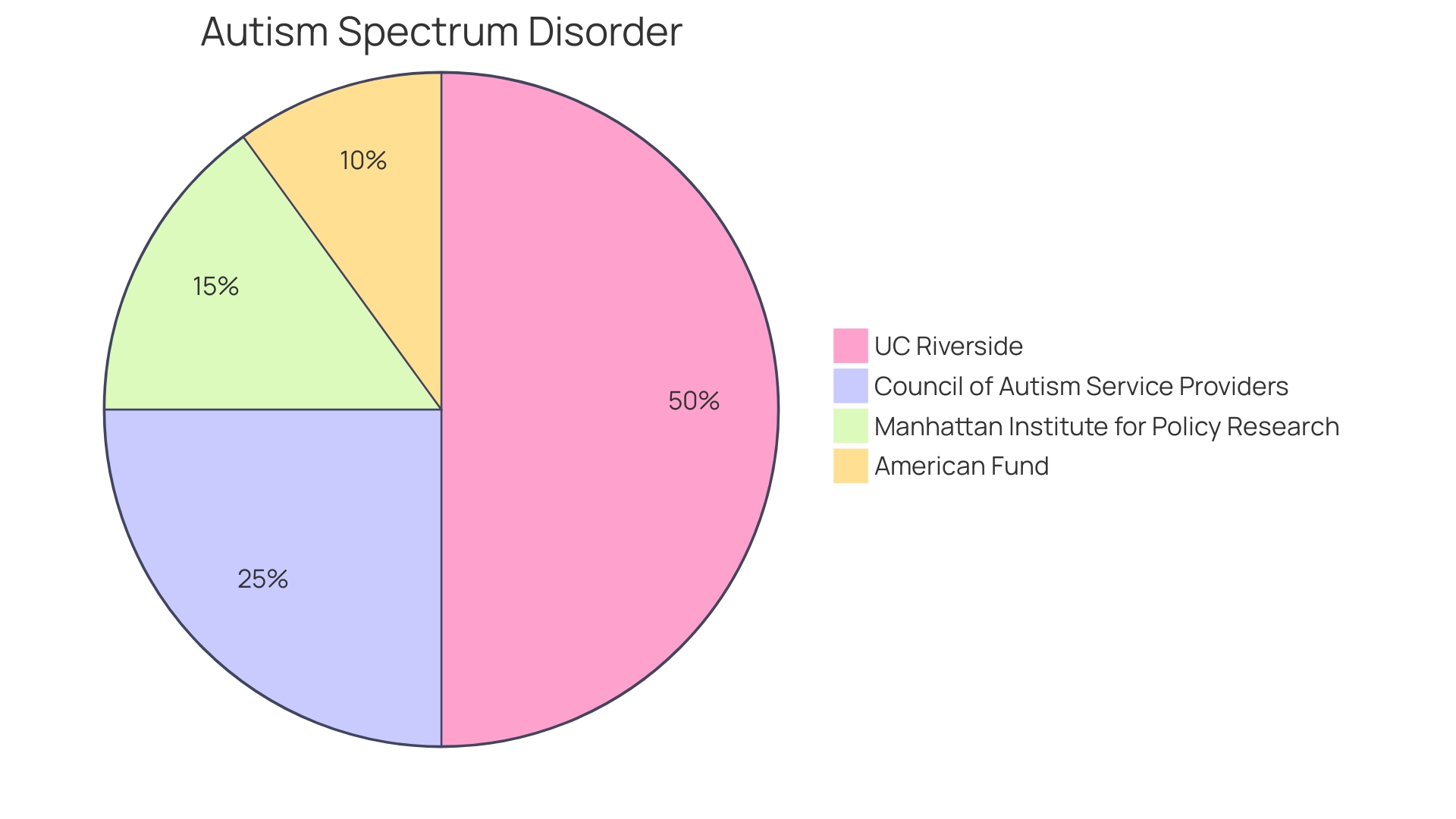
Skill Development and Generalization
Applied Behavior Analysis (ABA) therapy is not a one-size-fits-all approach; it's a dynamic treatment tailored to individual needs that transcends the therapy room into everyday life. It equips individuals with crucial skills such as effective communication, academic capabilities, self-regulation techniques, and the ability to navigate social environments. With the recent release of updated ABA Practice Guidelines by the Council of Autism Service Providers, there is a renewed emphasis on quality implementation of ABA to ensure the highest standard of care. These guidelines serve as a beacon for ensuring that ABA therapy is applied consistently and effectively across various contexts.
Acknowledging the diversity within the autism spectrum, the field is moving towards a more nuanced understanding of autism, as highlighted by Dr. Jan Blacher. This evolution in perception underlines the importance of adapting ABA interventions to the unique strengths and challenges of each individual. Furthermore, the social model of disability invites a shift in perspective, seeing disability through the lens of social constructs and advocating for changes in societal attitudes and structures rather than solely focusing on the individual to adapt.
This progressive outlook is mirrored in the flexibility now found in ABA therapy practice, with professionals like BCBAs benefiting from hybrid work models that cater to their professional and personal needs. Such adaptations are vital for attracting and retaining the talent needed to deliver high-quality ABA services. As the landscape of autism treatment continues to evolve, so too does ABA therapy, adapting and innovating to meet the diverse needs of the autism community.
Reduction of Challenging Behaviors
Applied Behavior Analysis (ABA) therapy has become a cornerstone in addressing the complex needs of individuals with Autism Spectrum Disorder (ASD) and Attention Deficit Hyperactivity Disorder (ADHD). This scientific approach tailors interventions to the unique challenges presented by each individual, focusing on enhancing positive behaviors and learning opportunities. ABA therapy employs a variety of techniques, such as positive reinforcement and behavior management, to help individuals develop functional communication skills and appropriate behavior alternatives to replace those that are challenging. Given the rising prevalence of autism, now reported in 1 in 36 individuals, ABA's adaptable methods are more important than ever in meeting the diverse spectrum of needs. The therapy's effectiveness is further supported by a commitment to ethical principles and evidence-based best practices, ensuring that every intervention is designed to bring about lasting, meaningful change while respecting the individual's dignity and promoting their mental health.
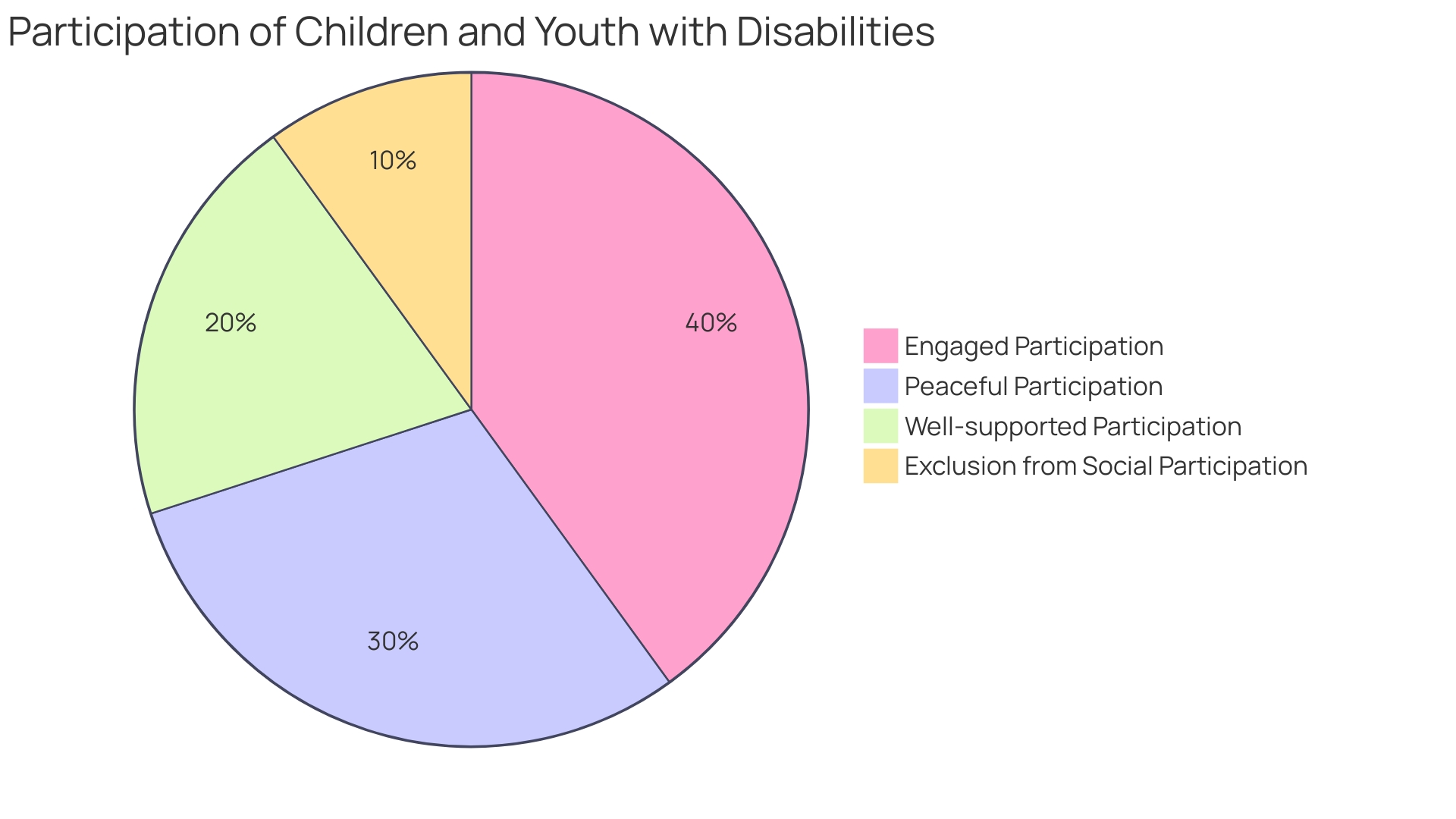
Preparation for School and Real-World Experiences
Applied Behavior Analysis (ABA) therapy is not just about modifying behaviors; it's about enriching lives by teaching fundamental life skills to individuals with Autism Spectrum Disorder (ASD) and Attention Deficit Hyperactivity Disorder (ADHD). The therapy's core lies in its tailored approach to each individual, equipping them with the ability to follow instructions, complete tasks with autonomy, and actively engage in group settings—paving the way for academic success and social integration.
Recent updates in ABA practice guidelines by the Council of Autism Service Providers emphasize the importance of high-quality implementation, reflecting an evolving understanding of autism that moves beyond the medical model's focus on deficits. Instead, ABA today recognizes the diverse abilities of individuals with ASD, advocating for interventions that respect their identity and autonomy.
Statistics highlight the need for critical evaluation of intervention research, ensuring not only effectiveness but also the ethical dimensions of respect and harm avoidance. With growing cases of autism, as noted by Dr. Jan Blacher, there's an imperative to refine ABA approaches that cater to the wide spectrum of abilities and needs within the autistic community.
This shift in perspective aligns with the social model of disability, which views disability through the lens of social constructs rather than solely impaired function. By embracing this model within ABA, there's a significant move towards societal change, challenging traditional expectations and promoting inclusivity. As Dr. Lorri Unumb of CASP reminds us, the quality of ABA is paramount, reinforcing the therapy's potential to transform lives when applied thoughtfully and with a rights-based approach.
In the context of ABA, building a rapport with parents is fundamental. Clear communication and active listening form the bedrock of trust, ensuring that parents feel empowered and confident in their partnership with professionals. By acknowledging parents' insights and experiences, ABA practitioners can foster a collaborative environment, essential for the child's developmental journey.
The conversation around ABA continues to evolve, as does our understanding of autism. With the commitment to quality care and the recognition of disability as a minority identity, ABA therapy remains a beacon of hope, guiding individuals toward a future where they can thrive in their uniqueness.
Empowerment for Parents
Applied Behavior Analysis (ABA) therapy is not only about developing positive behaviors in children with ASD or ADHD; it's about empowering the entire family. Therapists collaborate with parents, imparting crucial knowledge and skills to help them support their child's journey. This collaborative approach fosters informed decision-making and active participation in therapy, ultimately benefiting the child's development. Kara, a pediatric occupational therapist, has seen the fruits of such empowerment through Independence Therapy, where children are encouraged to perform tasks on their own, building their autonomy and confidence. This aligns with the wisdom of Dr. David Offord, who emphasized the importance of a fair and supportive environment for children, especially those with disabilities, to thrive in school, home, and leisure settings. With the rise in autism diagnoses as explained by Dr. Jan Blacher, understanding the unique needs of each child becomes even more critical. The Center for Autism and Related Disorders has recognized this by adapting their talent acquisition strategies, ensuring that the professionals they bring on board are not only skilled but also understand the flexibility required to cater to each child's needs effectively. This holistic support system is paramount for children and their families, reducing stress and promoting mental health, as echoed by the statistics on the mental health determinants for children with disabilities. The goal is to create an equitable race for all children, one where every participant has the support they need to succeed.
Strategies Used in ABA Therapy
Applied Behavior Analysis (ABA) is an adaptable therapy, grounded in evidence-based methodologies, to foster positive behavior changes and develop essential skills. The individualized approach of ABA ensures that each technique is uniquely aligned with the person's specific needs and objectives. In doing so, ABA therapy emphasizes the importance of understanding the individual within their social and cultural context, recognizing that disabilities are not merely medical conditions but are also shaped by societal structures and cultural beliefs.
To effectively implement ABA strategies, building strong, trustful relationships with parents is crucial. This involves clear, open communication and a commitment to active listening, demonstrating that the therapist genuinely values parental input and views them as partners in the therapeutic journey. The recent guidelines released by the Council of Autism Service Providers underscore the necessity for ABA therapy to be delivered with the highest quality to be successful, reflecting a contemporary understanding that autism is a spectrum with diverse manifestations.
In light of the evolving nature of autism diagnoses, it is acknowledged that one-size-fits-all interventions are inadequate. Research has highlighted the need for intervention studies to be scrutinized for their quality and potential impacts, including their effectiveness and safety. This scrutiny is vital to respect the unique needs of each individual with autism and to support their well-being effectively.
The application of ABA strategies involves not only the establishment of a therapeutic connection but also the integration of ongoing practice supports and fostering alliances among schools, families, and healthcare providers. This collaborative approach is designed to ensure consistency and support across various environments, ultimately aiming to empower individuals with autism to thrive in their communities.
Discrete Trial Training (DTT)
Applied Behavior Analysis (ABA) therapy employs various techniques to improve positive behaviors and minimize negative ones. Among these techniques, Discrete Trial Training (DTT) is particularly noteworthy. DTT is a highly structured method that deconstructs complex skills into smaller, more digestible components. By using repeated and systematic trials, each skill is taught step by step. This approach not only includes prompts to encourage the correct response but also utilizes reinforcement to reward successful outcomes.
The effectiveness of DTT is monitored through meticulous data collection, which allows therapists to gauge progress and adjust their teaching strategies based on empirical evidence. Chris Oliver's application of variable practice with his children, akin to DTT, demonstrates how altering the environment and instructions can enhance skill acquisition and memory retention.
Moreover, recent guidelines from the Council of Autism Service Providers underscore the importance of high-quality implementation of ABA practices, such as DTT, to ensure effective treatment for autism spectrum disorder. These guidelines reflect a growing consensus on the necessity of data-driven, evidence-based ABA interventions.
In a rapidly evolving field, news from the (Access Technology) AT-Newswire highlights the value of accessible and reliable platforms for disseminating crucial information, emphasizing the need to translate data-driven research into practical, real-world applications. This aligns with the broader aim of using evidence-based approaches to overcome barriers and deliver optimal interventions for all individuals, regardless of social or cultural disparities.
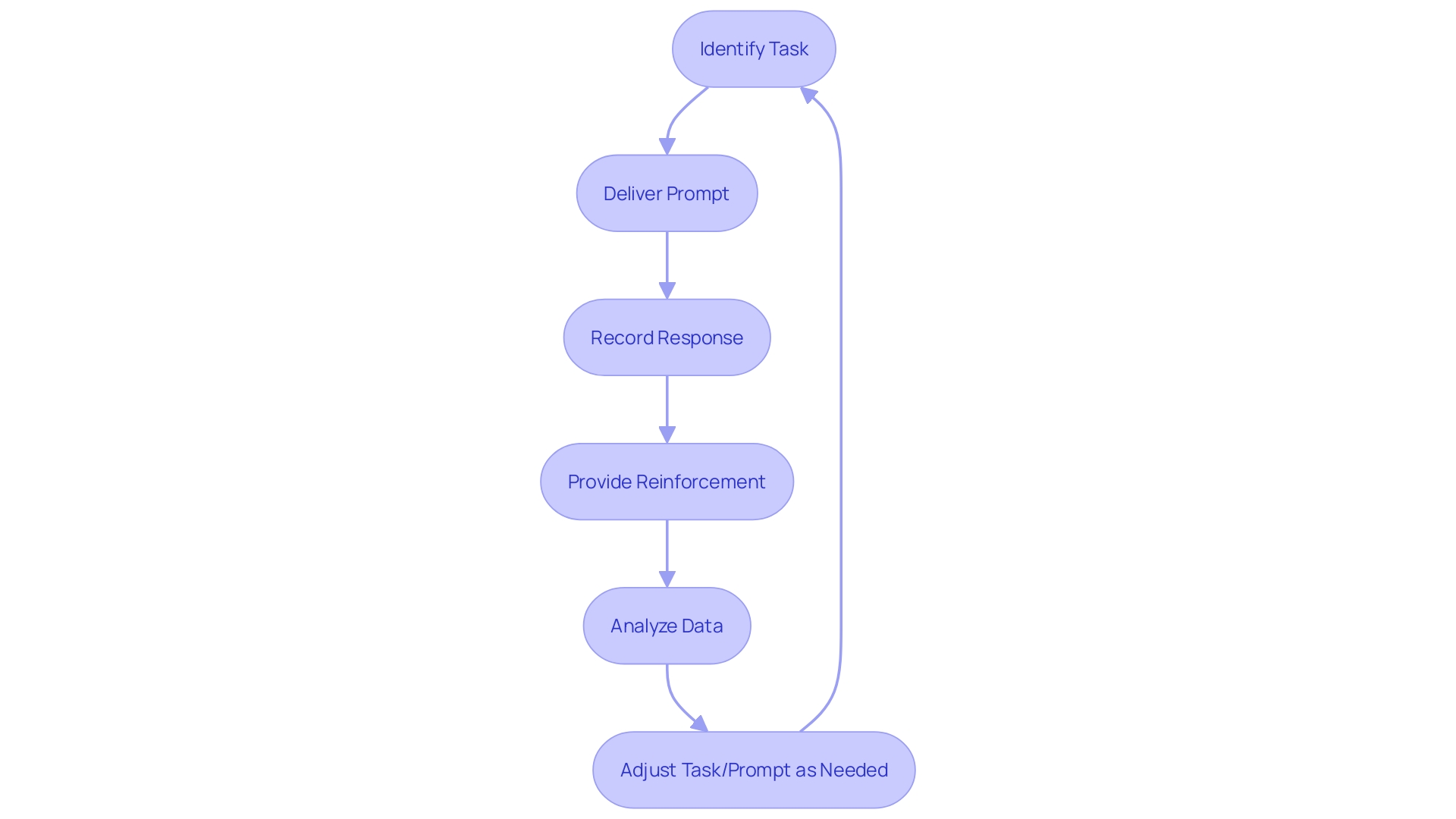
Early Start Denver Model
The Early Start Denver Model (ESDM) represents a transformative approach to early intervention for children with Autism Spectrum Disorder (ASD), blending the rigor of Applied Behavior Analysis (ABA) with developmental and relational techniques. ESDM is designed to enhance social communication, foster play skills, and teach adaptive behaviors to young children with ASD. By harnessing the power of naturalistic teaching methods and deeply involving parents in the process, ESDM seeks to lay a solid foundation for children's growth within their home, educational, and social environments.
Central to ESDM is the philosophy that equitable participation in daily activities is crucial for the mental health of children with disabilities. This aligns with the vision of child psychiatrist Dr. David (Dan) R. Offord, who believed in creating a fair 'race' for all children, including those with disabilities. ESDM aims to address unmet needs, mitigate stress, and empower caregivers with the necessary resources to support their children's development.
Recent shifts in autism research methodologies, from quasi-experimental designs to randomized controlled trials, underscore the importance of evidence-based interventions like ESDM. These advances reinforce the commitment to inclusive early learning opportunities, as outlined by legal frameworks like the Individuals with Disabilities Education Act (IDEA), and highlight the crucial role of states, local agencies, and families in fostering environments that support high-quality, individualized programming for children with disabilities.
By prioritizing inclusion as children transition to elementary school and beyond, ESDM not only serves as a beacon of hope for families but also represents a significant step towards realizing a society that values the contributions and potential of every child, regardless of their developmental challenges.
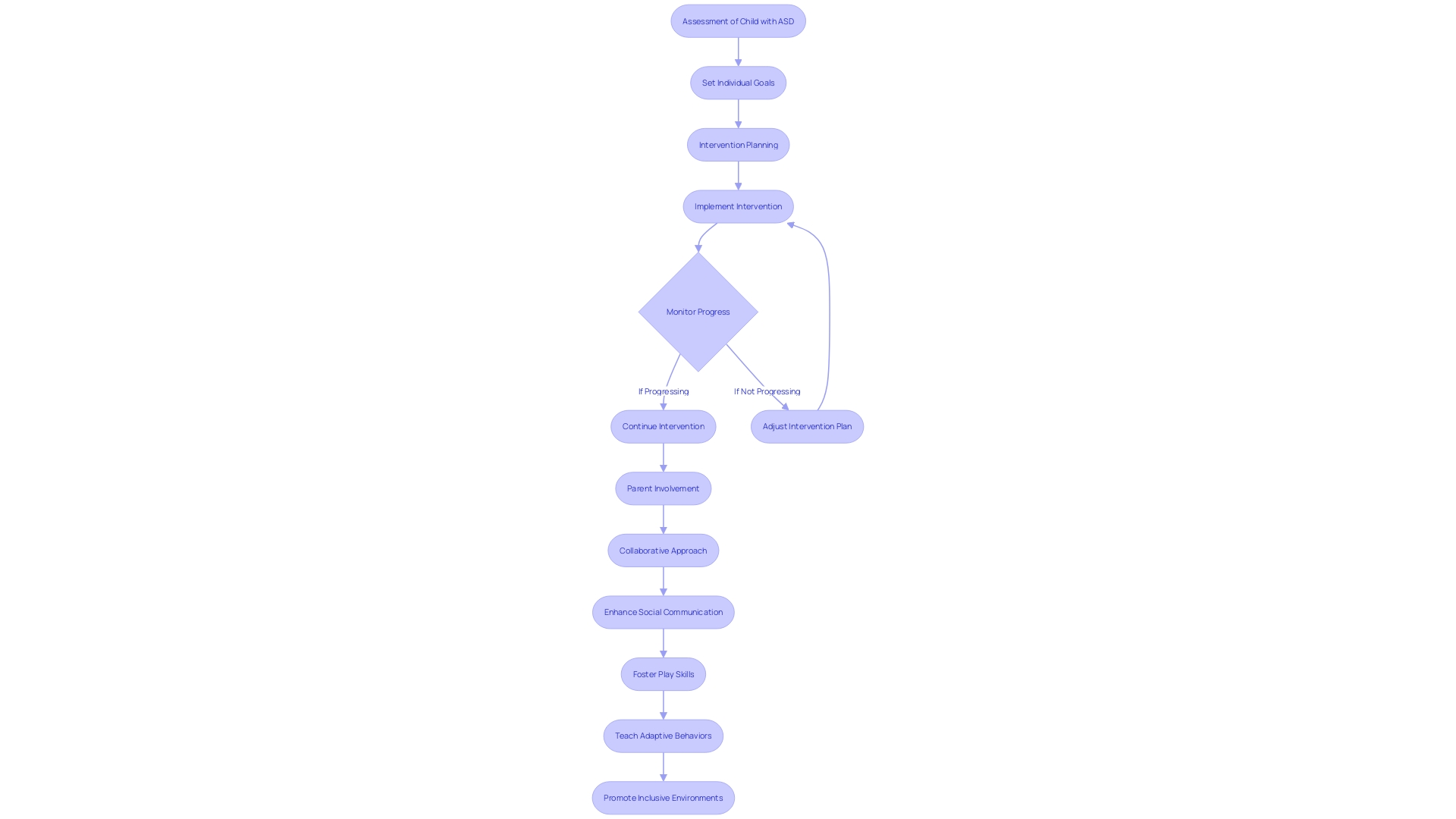
Pivotal Response Training
Pivotal Response Training (PRT), integral to Applied Behavior Analysis (ABA), focuses on key developmental realms such as motivation and social interaction. Tailored to the individual's interests, PRT leverages preferred activities as natural reinforcement, fostering skill acquisition and transfer to various contexts. Its effectiveness is rooted in child-led sessions, ensuring a personalized and engaging learning experience. Studies underscore the complexity of autism, a condition presenting unique behavioral challenges, particularly under increased stressors such as those experienced during the pandemic. Proactive interventions like PRT can play a crucial role in supporting the mental health and social inclusion of children with autism, emphasizing the significance of equitable opportunities for all children. Moreover, recent advancements in health technology, like the innovative interfaces from AAVAA and Augmental, offer additional tools to assist individuals with communication and control over their environment, further enhancing their quality of life. Amidst these developments, the guidance of experts like Dr. Mary Barbera and platforms like Proxy underline the importance of community and professional support in navigating the journey of autism. As we observe a rise in autism diagnoses, it's essential to adapt our understanding and approaches to therapy, ensuring that each child receives the tailored support they need to thrive.
Natural Environment Training (NET)
Natural Environment Training (NET) leverages the regular rhythms and routines of an individual's daily life to enhance learning. By incorporating skills training into the home, school or community environments where a person naturally spends their time, NET makes the most of natural cues and real-life scenarios. This approach not only promotes the acquisition of new abilities but also ensures these skills are more easily transferred and applied across different situations. The essence of NET is to create a seamless learning experience, where the boundary between instruction and daily activities becomes nearly indistinguishable. This integration helps foster a more organic development of skills, making the learning process both effective and enjoyable.
Early Intensive Behavioral Intervention
Early Intensive Behavioral Intervention (EIBI) is a cornerstone of Applied Behavior Analysis (ABA) therapy, aimed at young children diagnosed with Autism Spectrum Disorder (ASD). This highly focused approach involves 25-40 hours of therapy each week, addressing a variety of developmental areas. The principles of EIBI are grounded in the belief that equitable, well-supported, and engaged participation in life's domains—like school, home, and leisure—is vital for the mental health and well-being of all children, especially those with ASD and co-occurring intellectual disabilities, which range from 31-55%. EIBI's effectiveness is most pronounced when started early, as it can significantly reduce the risk of social exclusion and ensure that children with ASD can participate meaningfully in their communities. Recent shifts in autism research toward randomized controlled trials have strengthened the evidence base for interventions like EIBI, ensuring that caregivers have access to the most effective resources to support their child's development.
Implementing ABA Therapy
When crafting an Applied Behavior Analysis (ABA) therapy plan, it's essential to consider the unique needs and background of each child. ABA therapy is not a one-size-fits-all approach; it must be tailored to the individual to foster their mental health and ensure equitable opportunities for participation in school, home, and leisure activities. This personalization begins with establishing trust and a collaborative relationship with parents, characterized by clear communication and active listening, which signals a commitment to their child's well-being.
Active listening is a cornerstone of this process, signaling to parents that their insights and experiences are valued. This approach empowers parents to contribute to their child's learning process, confident in the knowledge that they are supported by professionals who respect their role and understand the challenges they face. Furthermore, considering the broader context in which a child lives, including cultural and social factors, is paramount when applying ABA interventions. It's about recognizing the child's strengths and potential while addressing barriers that may arise from social inequalities.
To truly make a difference, ABA professionals must translate theory into practice with sensitivity to these nuances. This includes facilitating partnerships between schools, families, and healthcare providers to ensure a cohesive support strategy. The aim is to move beyond theoretical knowledge to deliver meaningful, impactful actions that resonate with the real-world experiences of those living with autism. As we evolve our understanding of autism and adapt our practices, the social model of disability serves as a reflective tool to guide ABA supports, considering disability as part of a social and cultural landscape rather than just a medical condition.
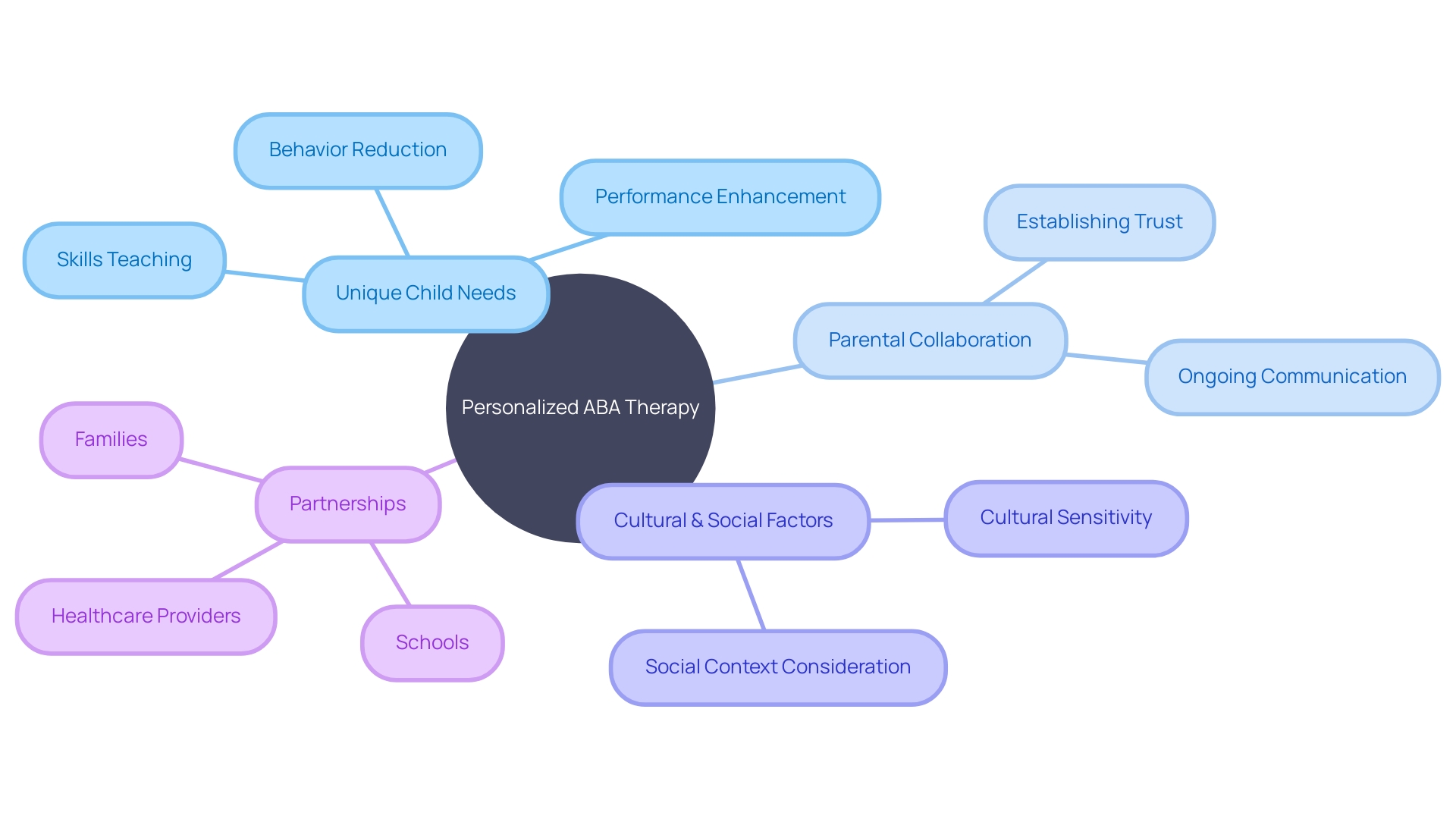
Assessments and Observations
To tailor ABA therapy effectively, it's vital to conduct thorough assessments and observations that tap into an individual's unique profile. These initial steps involve engaging with parents to gather insights, performing direct observations of the individual, and administering standardized assessments. Such meticulous groundwork is crucial in crafting a customized treatment plan that resonates with the individual's strengths, addresses their challenges, and aligns with their personal goals. This individualized approach underscores the significance of understanding each person's distinct needs and the context of their behaviors, whether they manifest as self-injurious actions like head-banging or other behaviors that may appear unconventional. Addressing these behaviors in a way that respects the individual's experience is a delicate balance, often highlighted by discussions within the autism community. Current trends and research in ABA therapy, including the updated guidelines by the Council of Autism Service Providers, reflect a commitment to high-quality, evidence-based interventions that are sensitive to the diversity and complexity of the autism spectrum.
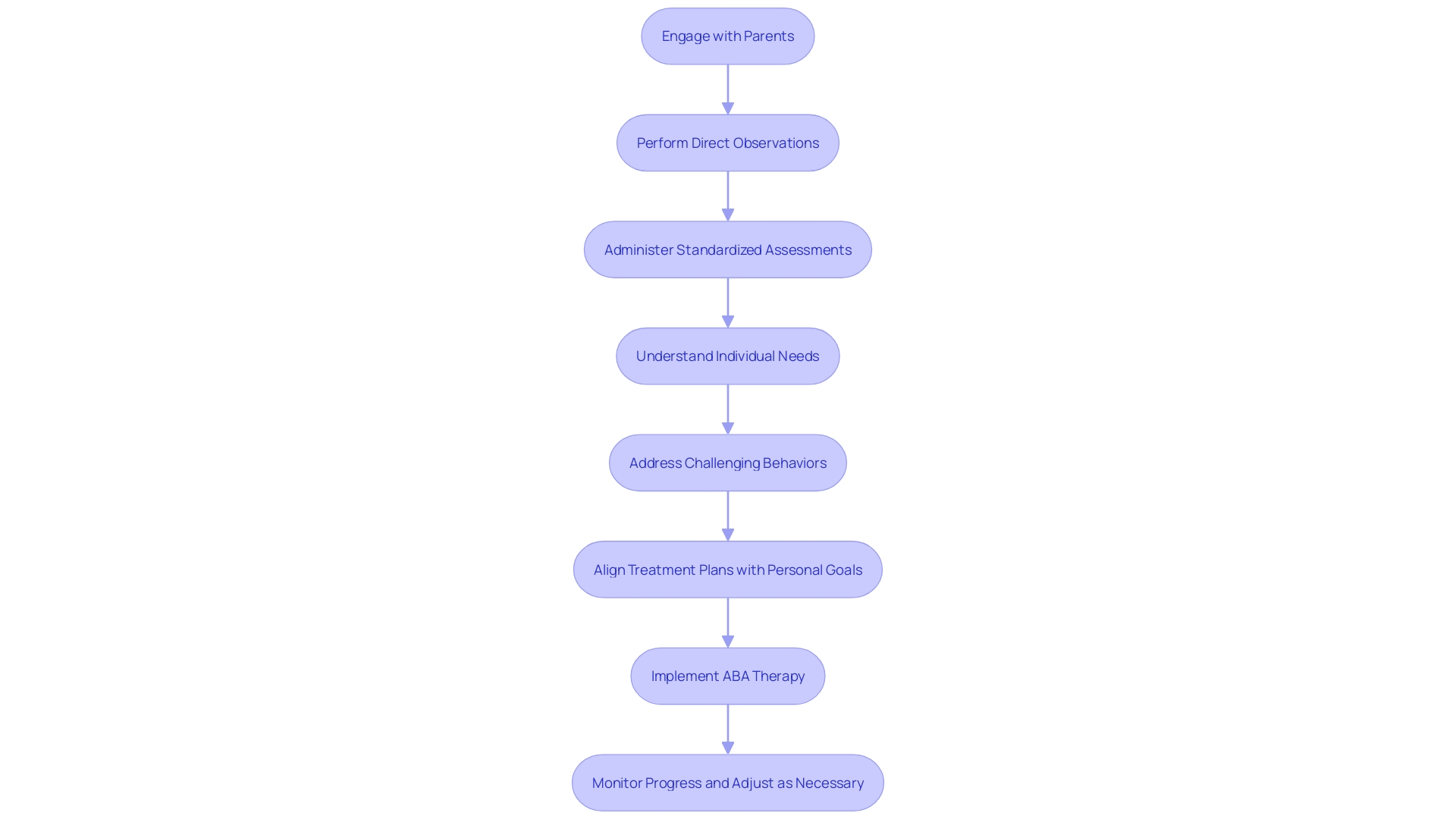
Personalized Treatment Plans
Applied Behavior Analysis (ABA) is a personalized and dynamic approach to therapy, meticulously crafted to meet the unique requirements and aspirations of each individual. Within the framework of ABA, treatment strategies are not one-size-fits-all but instead are meticulously designed, pinpointing the precise skills to be developed, the interventions to be employed, and the outcomes anticipated. This bespoke planning involves a collaborative effort, bringing together the insights and preferences of the family and the expertise of various professionals, to ensure that the care delivered is holistic and comprehensive.
In practice, ABA therapy can address a wide array of behaviors, some of which may pose safety concerns like head-banging, or create significant challenges for caregivers, such as inappropriate smearing. The overarching intention is to guide individuals in interacting with their environment in new, more constructive ways. While from one perspective, the aim of ABA might be to align behaviors more closely with societal norms, thereby easing social integration, it is crucial to consider the individual's well-being. The therapy should not solely focus on outward appearances of 'normalcy' but also ensure the mental health and authentic personal development of the individual.
Historically, the success of ABA has been notable, with early studies by Ole Ivar Lovaas highlighting remarkable outcomes such as substantial IQ gains and improved social functioning, allowing many children to integrate into mainstream settings. However, these results, while promising, underscore the importance of ethical considerations and the need for therapy that upholds the dignity and individuality of each person. The evolution of ABA therapy continues as it incorporates the principles of the social model of disability, recognizing disability as a social construct and advocating for changes in societal attitudes and environments rather than solely in individual behaviors.
As we acknowledge the diversity within the autism spectrum and the shifting paradigms of disability, ABA therapy too adapts, ensuring that interventions are not only effective but also respectful and supportive of each person's unique identity and abilities.
Therapy Settings: Home, Clinic, School, and Community
The delivery of ABA therapy is tailored to individual needs, with settings ranging from the comfort of one's home to specialized clinics, schools, or community environments. The decision on where to conduct therapy sessions hinges on several considerations, including ease of access, resource availability, and the personal comfort of the individual receiving therapy. With the release of new ABA Practice Guidelines by the Council of Autism Service Providers, there's an emphasis on high-quality implementation to ensure effectiveness. As noted by Lorri Unumb, CEO of CASP, 'ABA is a highly effective treatment for autism. But it has to be correctly implemented at the highest quality... These guidelines are key to achieving that.' This adaptability in therapy settings is further supported by recent trends toward flexible models of work, like hybrid models, which have shown success in attracting skilled professionals in the field, offering them the flexibility necessary for a balanced work-life integration.
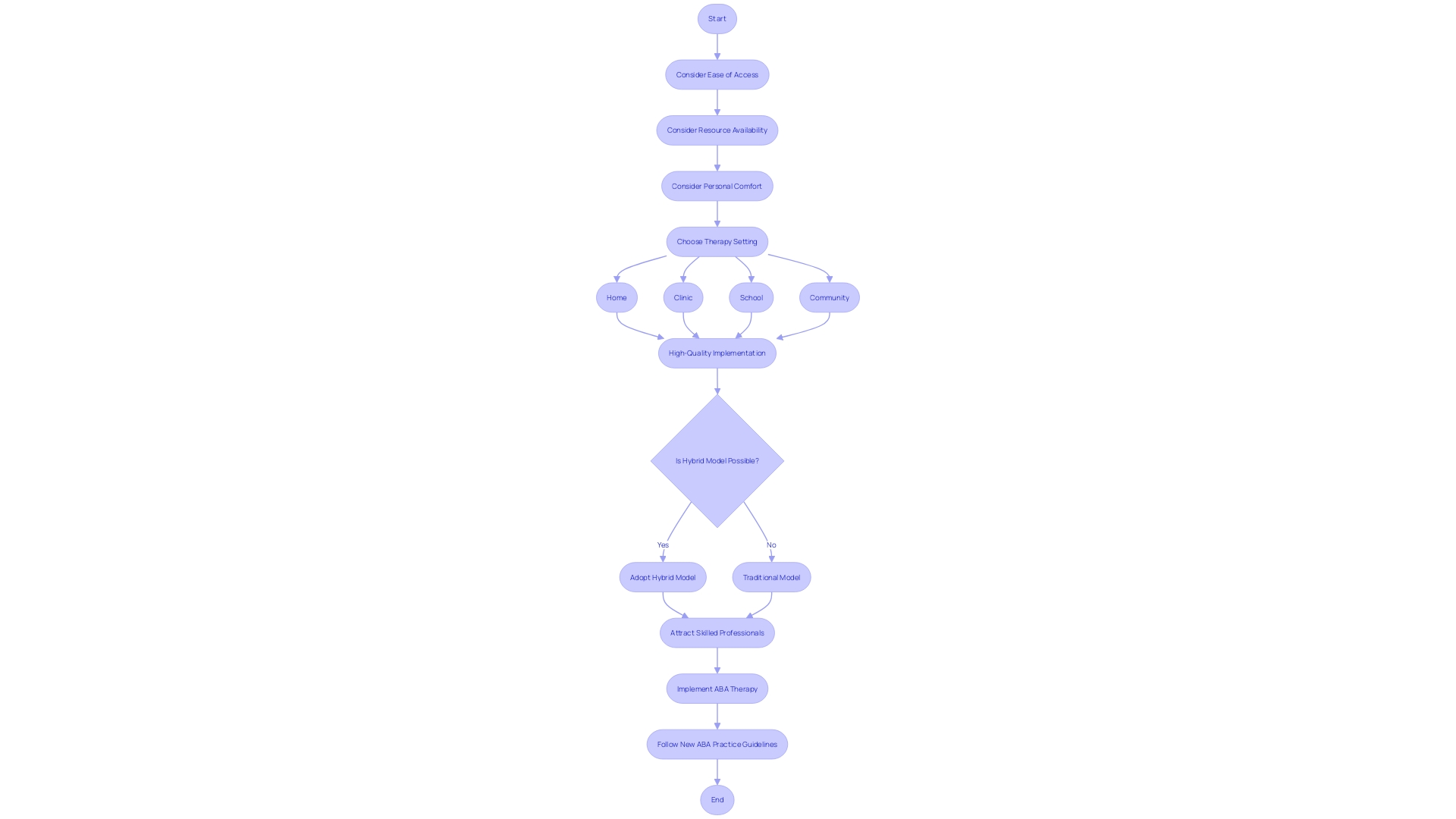
Conclusion
In conclusion, ABA therapy is a powerful and evidence-based treatment for individuals with autism spectrum disorder (ASD) and attention deficit hyperactivity disorder (ADHD). It fosters new skills, mitigates challenging behaviors, and improves overall quality of life. The CASP's new ABA Practice Guidelines set the standard for care, emphasizing the importance of correct implementation and individualized, culturally sensitive approaches.
ABA therapy goes beyond behavior modification, focusing on skill development, enhancing social competencies, and preparing for independent living. It embraces the social model of disability, promoting societal change and inclusivity. Additionally, ABA therapy supports parents and families, providing practical methods to address behaviors, fostering collaboration, and reducing stress.
By implementing the latest ABA guidelines and utilizing strategies like DTT, PRT, and NET, ABA therapy effectively supports individuals in acquiring essential skills and navigating various environments. It holds immense potential to empower individuals with ASD and ADHD, enhance their quality of life, and foster an inclusive society.
In conclusion, ABA therapy is a transformative approach that prioritizes individual needs, evidence-based practices, and collaboration. By embracing these principles, ABA therapy continues to make a meaningful impact on the lives of those on the autism spectrum, promoting growth, independence, and well-being.




